The Rise of Digital Evidence: How Contracts Became Legal Data Points
In today's digital-first business world, contracts are no longer static documents filed away once inked. They have instead become living, evolving data sources, what many now refer to as legal data points. Every clause, date, signature, and obligation now carries measurable value and can be analyzed for trends, risks, and opportunities.
This is what brought change in the way organizations started viewing contracts. It wasn't a simple transactional record but more like digital evidence that told a story about a business relationship: its intent, its performance, and its outcome.
Thanks to the rise of contract analytics, automation, and cloud-based tools, this is now possible in ways unimaginable before. Legal teams that once buried themselves in paperwork can now unleash a goldmine of structured data to guide smarter decisions.
So, what does it mean for a contract to be a legal data point? Why does that matter? And how can your organization turn contract data into business intelligence? Let's explore.
1. From Paper Trails to Digital Evidence: The Contract Revolution
For years, contracts have had a physical existence: signed, stamped, and then filed. The legal teams very often have.webp?width=300&height=300&name=Untitled%20design%20(61).webp) to search through drawers, folders, and PDFs in an attempt to find one clause or date. Such a manual fragmented process stood in the way of key insights being accessed at the exact moment they were needed.
to search through drawers, folders, and PDFs in an attempt to find one clause or date. Such a manual fragmented process stood in the way of key insights being accessed at the exact moment they were needed.
That world has changed. As business operations went online, so did the contracts, becoming digital artifacts across devices and systems. What was earlier static paperwork has become dynamic data.
Each contract today carries many layers of information-not only its text, but metadata recording
- Who created it and when
- Which version is final
- When approvals were granted
- What are the responsibilities and renewal terms
- How performance compares across contracts
This transformation has turned contracts into digital evidence that is verifiable, time-stamped, searchable, and admissible in court.
According to global digital laws in India, an electronic contract is valid if all the authenticity and integrity requirements are fulfilled. That means it's the data within your contracts-and your handling of it-that could be the determining factor in your legal standing.
For organizations going through digitization, it becomes apparent that a contracts are not compliance tools, but strategic information; every term, date, and clause in a contract has the potential to convey knowledge on how well a company manages risks, obligations, and relationships.
The Shift from Documents to Data
Three key consequences of this transition are:
First, contracts are no longer hidden. They are visible across departments-accessible by Legal, Finance, Sales, and Procurement.
Secondly, this, in turn, enables analysis of the contracts themselves: hundreds or thousands of data points on common bottlenecks, negotiation trends, and average cycle times, renewal opportunities.
Thirdly, the automation of contracts is possible, where routine work like approvals, reminders, and clause extractions are performed by software to free up the legal teams for strategy work.
The result? Today, organizations consider contracts to be digital corporate assets-ones whose value can be measured.
2. When Contracts Become Data: What It Means for Legal and Business Teams
The very idea of a contract as a legal data point is more than just a buzzword; it is a paradigm shift. The moment.webp?width=300&height=300&name=Untitled%20design%20(59).webp) you start thinking about a contract not as a text, but as a dataset-you behold its hidden potential.
you start thinking about a contract not as a text, but as a dataset-you behold its hidden potential.
Each of these contracts holds dozens of measurable data points: names, obligations, values, timelines, renewal clauses, and compliance checkpoints. When these are structured and analyzed, the data reveal actionable insights that can drive performance, prevent risk, and uncover opportunity.
The Challenge of Contract Chaos
Yet, the sad reality for so many organizations today is that contract data resides in a number of places: emails, shared drives, Slack messages, and folders. Legal teams will then have to invest hours searching for a simple clause or renewal date.
And this disorganization comes with a price:
- Financial losses due to missed deadlines, auto-renewals, or failures to satisfy obligations.
- Weakened relationships because of neglected or misunderstood duty.
- Poor visibility translates to lost opportunities to re-negotiate or upsell.
- Non-compliances related to tracking of contractual obligations.
- Burnout of attorneys and other legal personnel due to routine manual tasks.
This isn't just inefficiency-this is lost value. Every disorganized contract represents a blind spot that can cost the business money, credibility, and opportunity.
Data-Driven Legal Teams: A Smarter Way Forward
The key to this lies in treating contracts as structured data. Legal teams that organize, tag, and track contract information can go from reactive work to proactive strategy.
Centrally repository your contracts to have line-of-sight into your obligations, risks, and timelines in real-time. That's not just simplifying legal operations; that's transforming them.
Legal teams can now:
- Identify high-risk clauses before signing.
- Set up automatic reminders for renewals or expirations. • Instant reports on contractual performance. • Track compliance metrics-highlight inconsistencies. Instead of reacting, they can anticipate; instead of guessing, they can measure and decide.
A New Era of Legal Collaboration
This evolution also improves how legal teams interact with other departments. When contract data is structured and accessible, collaboration becomes seamless.
- Finance teams can forecast revenue based on payment schedules.
- Procurement teams can track vendor performance and renewal terms.
- Sales teams can identify contracts ready for upsell opportunities.
- Executives can view dashboards to measure risk exposure or negotiation efficiency.
Contracts are no longer locked away with Legal-they’re shared assets powering the entire business.
The transformation is clear: contracts have moved from legal necessity to business intelligence.
3. Building a Future-Proof Contract Data Management System
Recognizing contracts as data is one thing, managing that data effectively another.
A structured contract data management process actually makes that concept a reality: It ensures that every.webp?width=300&height=300&name=Untitled%20design%20(62).webp) contract-from creation through renewal-provides information that can be put to use by your organization.
contract-from creation through renewal-provides information that can be put to use by your organization.
Here's how to build a system that supports such a transformation.
Stage 1: Capturing and Organizing Contracts
Step one: visibility. Round up all your contracts from where they are held-inboxes, shared drives, or third-party tools-and move them into one central repository.
A CLM solution or a dedicated data repository ensures that there is one trusted location for each agreement. It will be your single source of truth.
Tag and categorize your contracts once they are centralized. Record metadata such as:
- Type of contract
- Parties Involved
- Effective and expiry dates
- Value and Payment Terms
- Responsible teams or approvers
These facts form the basis of your contract database.
Stage 2: Analyzing and Tracking Contract Data
Now that the contracts are organized, it's time to extract insights.
With AI and automation incorporated into modern CLM platforms, they can read contracts, pull out key points of data, and identify trends. You can immediately see things like
- Which contracts are up for renewal next quarter.
- Which clauses most often cause delays.
- Where financial exposure is highest.
- How long, on average, it takes to close the contract.
Real-time visibility of activity enables informed decisions by the legal teams more quickly than ever, mitigates the risks of missed deadlines or overlooked terms, and is costly to your organization.
Stage 3: Reporting, Refining, and Optimizing
Finally, reporting turns contract data into intelligence.
Visualization of metrics such as approval time, contract value, or clause deviation, for example, allows legal teams to show their value. Reporting back to leadership on a regular basis regarding gains in efficiency, cost savings, and performance in compliance.
But it does not stop there: a solid contract data management framework is one that evolves over time, and you will be required to continually refine metadata categories, integrate new systems, and further automate repetitive steps as your organization grows.
The goal is to create a self-sustaining cycle: capture → analyze → act → optimize.
Why Automation is a Game-Changer
Automation lies at the very heart of modern contract data management.
You automate routine steps, such as reminders, approvals, data extraction, and compliance checks, which reduces manual errors while freeing your team for higher-value tasks.
Imagine never missing a renewal because your system notifies you weeks in advance. Or, being able to generate a report on all contracts containing non-standard clauses in a few minutes.
Automation ensures consistency. Every single contract represents exactly the same data structure, hence making analytics both accurate and reliable.
Most importantly, it minimizes burnout; lawyers are no longer spending their time in finding files or updating spreadsheets. Instead, they can get involved in negotiation, compliance strategy, and business partnership.
That's how automation turns contract management from reactive to predictive.
Managing Contracts as Data: The Benefits
The ripple effect will go down to your whole organization when contract management is done as data points..webp?width=300&height=300&name=Untitled%20design%20(60).webp)
- Reduced Risk: Tracking of obligations and deadlines prevents compliance gaps. Automated reminders ensure that transparent workflows don't let anything slip through the cracks.
- Improved Efficiency: Centralized data means that searches are faster, audits are simpler, and collaboration is clearer. Approvals are faster because everyone is working from the same information.
- Greater Visibility: Dashboards and analytics provide insight into the trend at the portfolio level. Delays, bottlenecks, and repetitive negotiation issues can be quickly identified.
- Strategic Decision-Making: Data-driven insights provide clear visibility into financial exposure, supplier performance, and contractual health to leadership.
- Empowered Legal Teams: With fewer manual tasks, legal departments would be free to think about risk strategy, updating policies, and business alignment-in fact, turning what has traditionally been a support function into a much more strategic partner.
Contracts become more than a record of intent-they are actually a system of intelligence driving better decisions.
Metadata: The Building Blocks of Contract Intelligence
Every contract holds two types of data: the text itself and the metadata surrounding it.
Metadata is simply “data about data.” For contracts, this includes everything from who signed it to when it was last modified.
Examples of valuable contract metadata include:
- Contract type and category
- Party names and contacts
- Execution date and expiry
- Department owner
- Renewal and termination terms
- Status (drafted, reviewed, approved, signed)
- Related documents or amendments
The richer and more structured your metadata, the more valuable your contract database becomes.
Unstructured notes, random naming of the files, or inconsistent tagging hinder analysis of contracts later on. This is why clear data-entry standards and validation rules should be predefined right from the start.
Done right, metadata turns your repository into a powerful search and analytics engine, able to answer questions in seconds, not in hours.
Looking Ahead: Contracts as Predictive Tools in 2025
In 2025, successful legal teams don't just manage contracts; they use them for prediction and insight.
Application of data analytics, AI, and automation to contracts facilitates predictions of renewal trends, recognition of compliance risks, and the measurement of business performance.
Legal departments will continue to evolve from back-office support units into data-driven strategic partners that define how organizations engage in relationships, close deals, and calibrate risk.
By digitizing their contracts into evidence and structured data, organizations can simultaneously protect their companies legally while creating a measurable competitive advantage.
Conclusion
But now, contracts have gone digital. They're no longer just legal paperwork; they are actually living, data-rich assets that tell the story of your business.
Treated as digital evidence and managed like data points, contracts unlock their most extraordinary value. They let legal teams move faster, mitigate risk, and make smarter decisions backed by facts rather than assumptions.
2025 ushers in a new era of digital evidence, a defining shift for the operation of law, with the power to harness it resting in an advanced and methodical approach to contract data management.
If your organization is still hanging on to spreadsheets or scattered folders, it's time to modernize your ways.
How Contract Data Management Helps Maximize Legal Impact in 2025
Learn how to build appropriate processes in contract data management that enable you to unlock the value of data stored in your contracts and apply it toward key business decisions.
Key Takeaways:
- Workflow automation reduces manual efforts and thereby the errors associated with it.
- Key data tracking for financials, dates, and clauses enhances decision-making.
- Structured management processes support collaboration.
- The insights in the data facilitate the identification of risks and opportunities in the early stages.
- Centralized systems enhance compliance and operations.
Is unorganized contract data dragging your legal department into chaos? You are not alone. Several organizations face inefficiencies due to time, money, and trust.
With the Contract Management System offered by Dock 365, in-house legal teams can track, analyze, and act upon the contract data to turn day-to-day agreements into actionable business insight.
Start today. Turn your contracts into data-driven digital evidence that drives growth, efficiency, and compliance.
Schedule a free demo with Dock 365 and see how contract data management can maximize your legal impact.
Book a Live demo
Schedule a live demo of Dock 365's Contract Management Software instantly.
.jpg?width=1260&height=1205&name=Image%20(2).jpg)
Written by Fathima Henna M P
As a creative content writer, Fathima Henna crafts content that speaks, connects, and converts. She is a storyteller for brands, turning ideas into words that spark connection and inspire action. With a strong educational foundation in English Language and Literature and years of experience riding the wave of evolving marketing trends, she is interested in creating content for SaaS and IT platforms.


